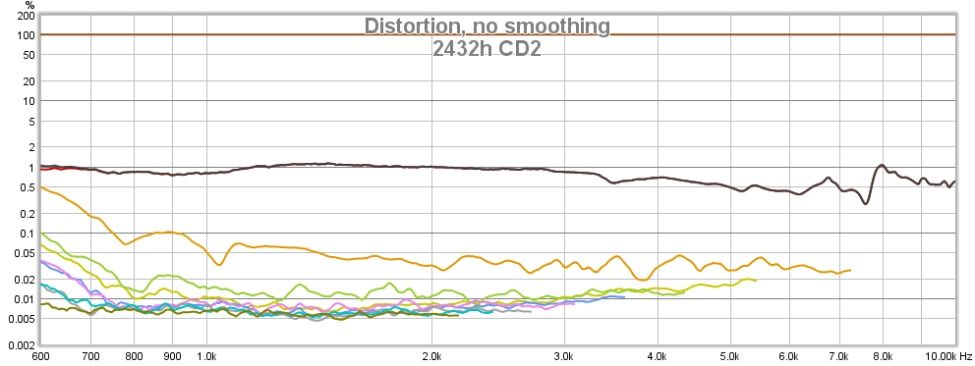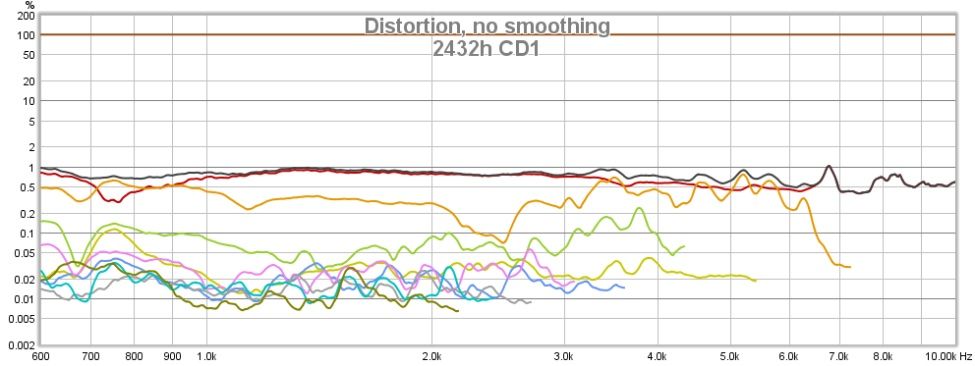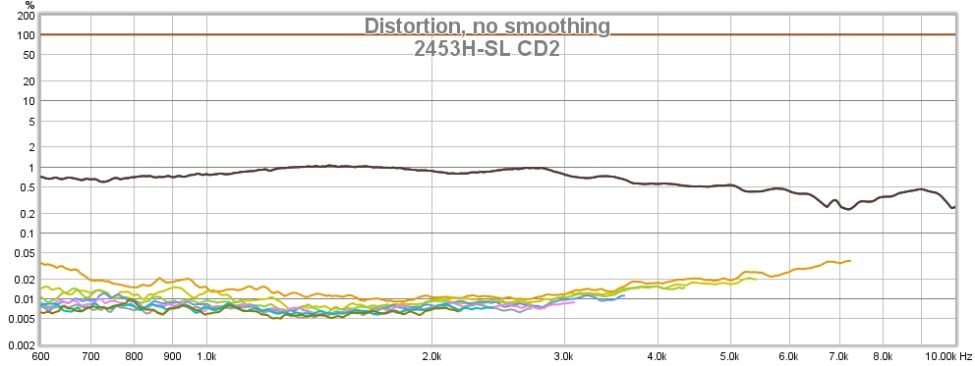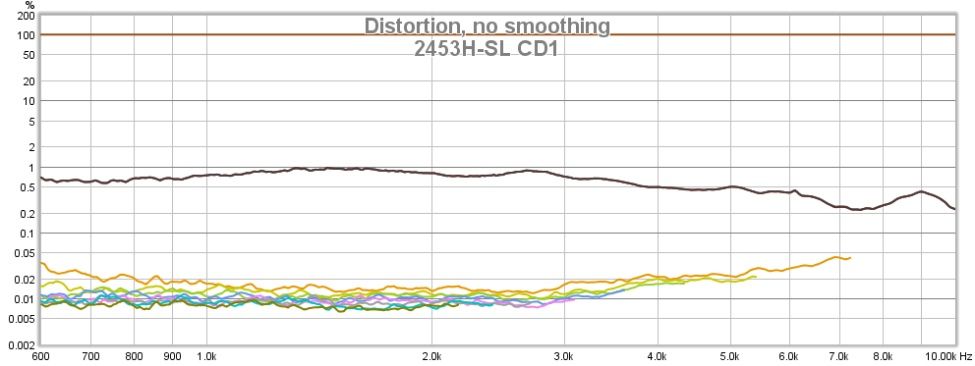Will give it a go next measurement round and follow-up.
Try this once:
Sweep at intervals of 5dB, say from 50dB on up.
Measured distortion will be high at low SPL as noise dominates the measurement, and will fall with each higher SPL measurement, until the real distortion rises out of the noise floor, then the readings will rise.
50dB sweep - distortion is room noise, not the speakers.
65dB - higher signal to noise, so lower distortion
80dB - this is the about the turning point - SNR is highest before real distortion comes in
85dB - rising Distortion to Noise ratio
95dB -rising more







